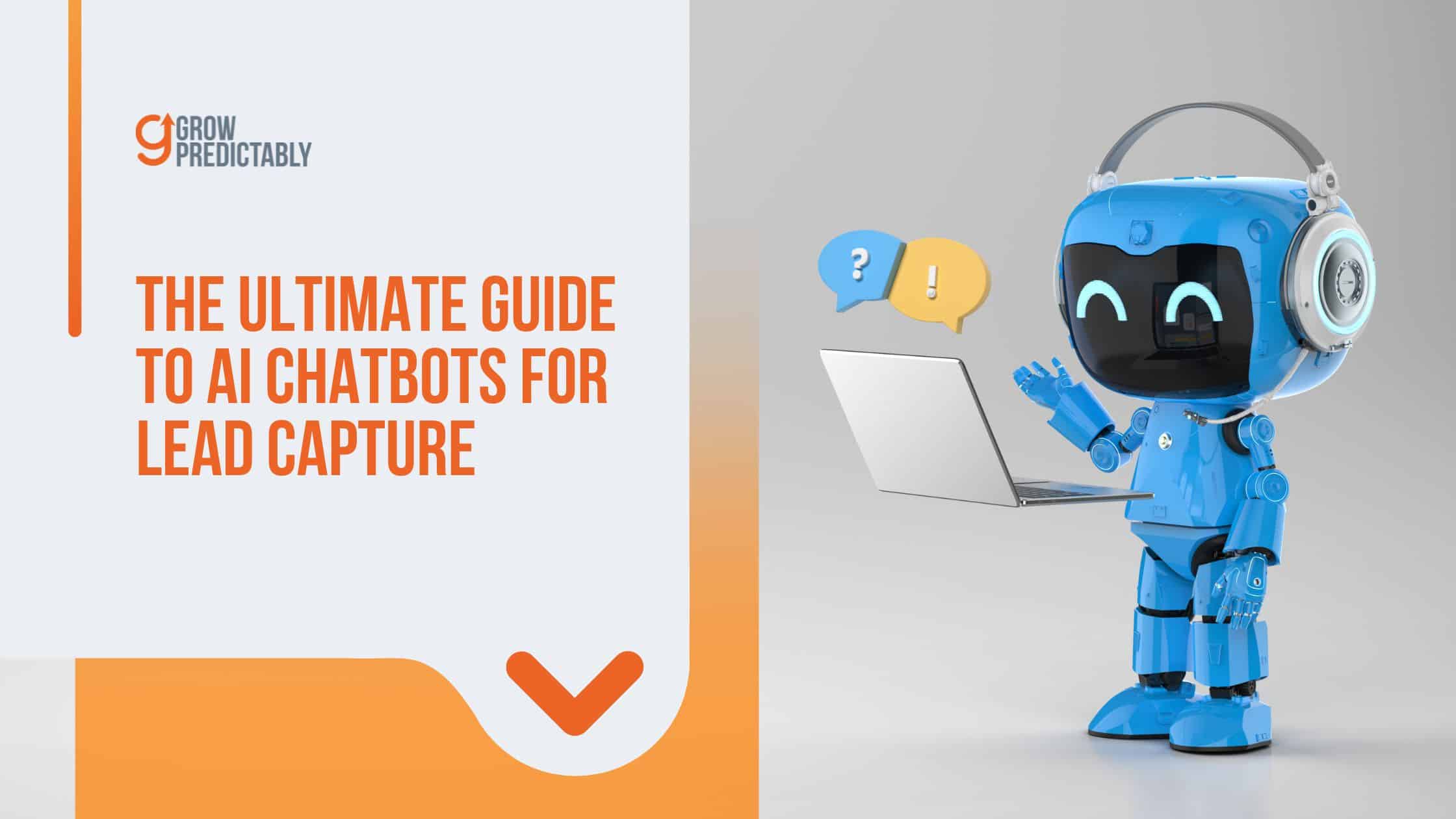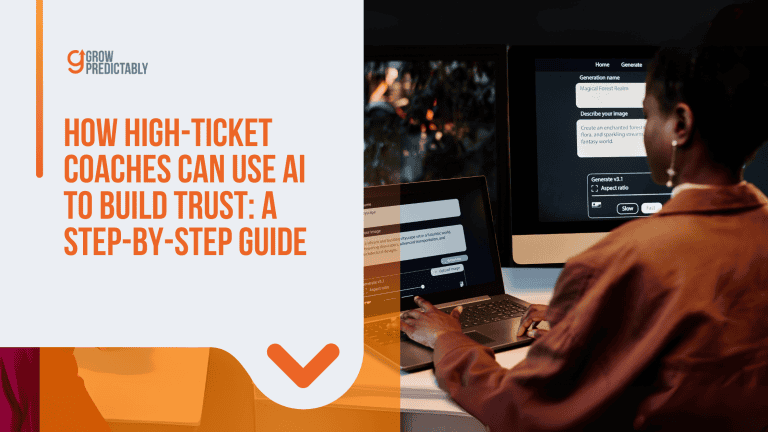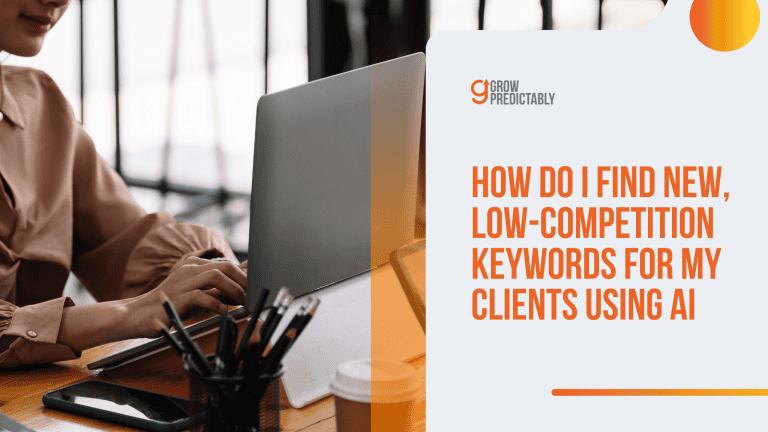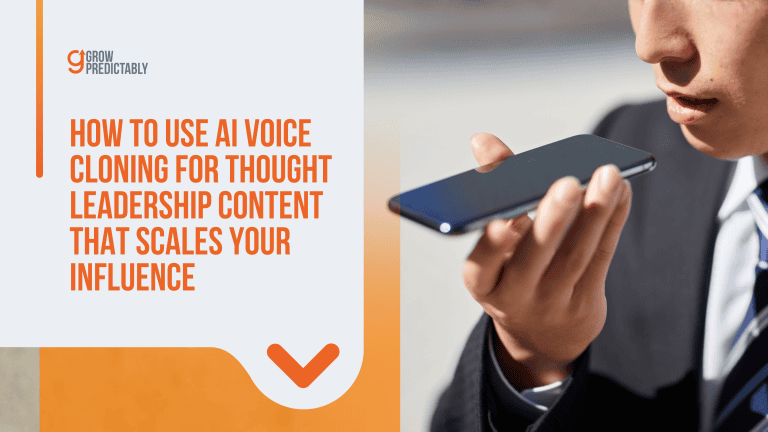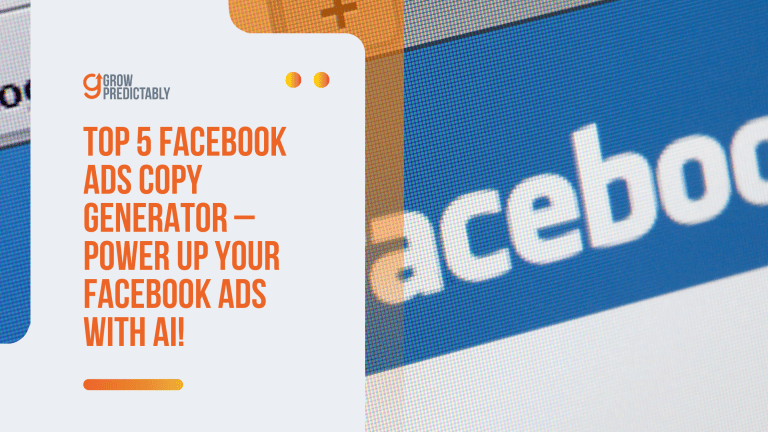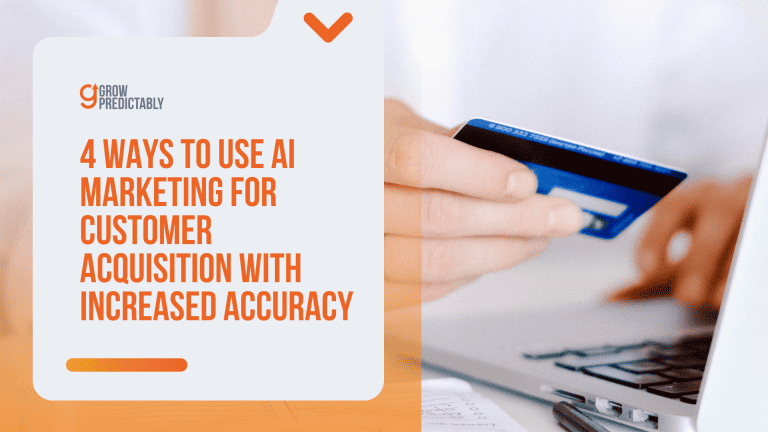The Ultimate Guide to AI Chatbots for Lead Capture
Your website is missing out on leads—but not for the reason you think.
Forms get ignored.
Email capture pop-ups get closed.
And human reps miss conversations.
AI chatbots for lead capture solve this by responding instantly and filtering real prospects from casual visitors.
They also automatically collect contact details, streamlining follow-up processes and ensuring sales teams have access to up-to-date lead data for efficient engagement.
Companies using chatbots get 3x more qualified leads (Drift, 2023).
Want to see how to set one up without messing it up?
Let’s break it down.
Understanding AI Chatbots for Lead Capture
Imagine having a smart digital assistant tirelessly working round the clock, connecting with your website visitors and turning them into valuable leads—even while you’re catching some Z’s.
It’s remarkable!
These chatbots aren’t just about automated responses; they’re about creating genuine, insightful interactions that transform passive browsing into active engagement, helping to generate leads by engaging website visitors in real time.
The Evolution of AI Chatbots
Forget the old-school bots that only followed simple if-then scripts.
We’re witnessing a new breed thanks to advancements like Natural Language Processing (NLP).
This technology empowers chatbots to understand conversational nuances and engage users in meaningful dialogues truly.
Advancements in AI chatbots also help identify potential customers by understanding these nuances and tailoring interactions to gather contact information and engage them with relevant products or services.
Machine Learning takes it a step further, allowing these bots to evolve and refine their interactions as they learn from each conversation.
This isn’t just a mechanical response—it’s a seamless blend of understanding and adaptability.
Impact on Business
Chatbots are changing the game for businesses that sell software to other businesses (B2B SaaS).
In 2024, 58% of companies that use chatbots operate in the B2B (business-to-business) sector.
Among those B2B companies, 65.1% are SaaS (software-as-a-service) companies.
Additionally, 38.9% of businesses using chatbots are in the IT software and services sector.
AI chatbots can reduce the workload of sales reps by half by handling common customer questions.
Companies that use AI chatbots report seeing three times more sales conversions than those relying on traditional website forms.
Chatbots have increased by 92% since 2019, making it the fastest-growing way for businesses to communicate with customers.
Furthermore, the chatbot market is projected to reach $1.3 billion by 2025.
Key Features of AI Chatbots
Let’s break down the key features driving the efficiency of these AI chatbots:
- Understanding Normal Human Speech: Natural Language Processing (NLP) enables chatbots to comprehend and engage in natural dialogue, ensuring interactions are intuitive and contextually relevant.
- Learning and Improving: Machine Learning ensures that these bots don’t just remain static—they grow and develop from each conversation, leading to progressively smarter interactions.
- Grasping the Meaning: Through Natural Language Understanding (NLU), chatbots extract intent and sentiment, providing responses that align closely with user expectations and needs.
How Chatbots Help in Lead Generation
AI chatbots are transforming lead generation by offering tangible, practical solutions that work in the real world.
A lead generation bot automates the lead generation process and enhances user engagement by providing relevant data through conversational interactions.
Let’s break down exactly how these digital marvels boost your lead generation efforts without drowning in unnecessary elaboration.
Sorting Through Potential Customers
At the forefront, chatbots excel in filtering through waves of potential customers.
Acting as a tireless 24/7 sales team, they deploy targeted questions to discern genuine prospects from casual browsers.
Their constant availability and adaptability ensure a seamless screening process.
As highlighted in a 2023 Drift study, businesses harnessing chatbots for lead qualification enjoyed a 35% rise in high-quality leads.
Personalizing Conversations
One of a chatbot’s standout capabilities is personalization.
These AI assistants remember user interactions and leverage this data to tailor conversations, enriching the user experience.
For instance, when a visitor mentions a specific interest, the chatbot notes this and revisits the topic in subsequent interactions.
A HubSpot report found that such personalization increases engagement rates by approximately 40%, echoing the power of tailored dialogue.
Handling Basic Customer Questions
Chatbots play a crucial role in fielding basic customer inquiries, allowing your human team to concentrate on more intricate tasks.
Queries like “What are your hours?” or “Do you ship to Canada?” are efficiently managed without delay, offering continuous support.
According to Intercom, businesses leveraging chatbots for basic support save an average of 30 hours weekly—time reallocated to strategizing or tackling complex customer needs.
Moving People Through the Sales Funnel
Here’s where chatbots truly shine—advancing prospects smoothly through your sales funnel.
Their functions include:
- Initiating Conversations with Visitors: They engage users instantly upon landing on your site.
- Collecting Contact Information: Information is gathered fluidly within the chat, reducing friction.
- Sharing Relevant Content: They offer resources and information tailored to what users inquire about, enhancing their journey.
- Booking Meetings with Sales Reps: Chatbots can seamlessly schedule appointments, facilitating timely sales follow-ups.
- Following Up with Inactive Leads: They gently nudge prospects who have gone silent, maintaining engagement.
A Salesforce study revealed that chatbot-managed leads convert 29% more frequently than those generated via traditional contact forms, underscoring their efficiency.
Spotting Buying Signals
Beyond funnel management, chatbots are adept at identifying subtle buying signals.
Inquiries about pricing or competitor mentions are highlighted as high-priority leads, prompting your sales team to take immediate action.
Integration with Marketing Plans
While formidable on their own, chatbots deliver optimal results when integrated into a comprehensive marketing strategy.
They are exceptional at initiating contact and gathering data, but closing sales often requires the nuanced touch only humans provide.
Thus, an ideal synthesis of human acumen and AI precision can maximize your lead generation and conversion potential.
Choosing the Right AI Chatbot Platform
Selecting the ideal AI chatbot platform can indeed feel like navigating a labyrinth filled with seemingly endless possibilities.
Each platform sings its praises, boasting unique strengths and features.
Here’s how you cut through the clutter and focus on what truly counts for effective lead generation.
The right platform can significantly increase the number of leads generated and help qualify leads more effectively by integrating seamlessly with CRM systems and personalizing interactions.
Assessing Business Needs
Start by taking a good, hard look at your specific business requirements.
Tailoring your choice to align with these needs is crucial.
For smaller businesses, investing in platforms laden with complex, enterprise-level features might lead to unnecessary complications.
Instead, focus on what’s essential to drive your goals effectively:
Ease of Use
Navigating a new platform should not be tantamount to climbing Everest.
The right platform will be intuitive, allowing for swift implementation without entailing an advanced degree in technology.
Consider these factors:
- How Quick is it to Set Up?: A platform that facilitates a speedy setup ensures you get up and running without a hitch, minimizing downtime.
- Can Your Team Handle it Without a PhD in Computer Science?: Opt for user-friendly interfaces that empower your team to manage and operate efficiently without needing exhaustive technical expertise.
- Does it Have Good Templates to Start With?: Pre-designed templates can be lifesavers, providing a solid foundation from which you can launch effective campaigns with minimal effort.
Top 5 AI Chatbots for Lead Generation
Ready to supercharge your lead generation efforts with AI chatbots?
Here’s a straightforward breakdown of the top platforms making waves and delivering real value today.
These aren’t just popular names but proven performers offering specific strengths tailored to different business needs.
1. Drift
- Main Strength: Drift is exceptional at facilitating real-time conversations that engage users in a natural, seamless way.
- Standout Feature: Its “Conversational Marketing” system integrates directly with sales teams, ensuring hot leads are connected instantaneously.
- Best For: B2B companies dealing with complex sales cycles that require more nuanced interactions.
- Notable Result: Companies using Drift report a 50% increase in qualified leads according to the Drift Revenue Acceleration Study.
2. Landbot
- Main Strength: Known for its user-friendly drag-and-drop builder, Landbot makes chatbot creation accessible to all.
- Standout Feature: The visual flow builder appeals to non-techies, allowing quick and easy setup.
- Best For: Small to medium businesses looking for rapid deployment without extensive technical hurdles.
- Real Example: A marketing agency experienced a 40% increase in lead collection over two months after implementing Landbot.
3. Collect.chat
- Main Strength: Offers ready-to-use lead generation templates, perfect for quick deployment.
- Standout Feature: The platform includes over 100 integrations, functioning smoothly straight out of the box.
- Best For: Startups and small businesses operating on tight budgets.
- Cool Fact: Users see an average of 3x more form completions compared to regular contact forms.
4. Botsonic
- Main Strength: Utilizes advanced AI capable of learning from conversations, enhancing its response accuracy over time.
- Standout Feature: Its capacity to handle complex product inquiries makes it a valuable asset.
- Best For: E-commerce and SaaS companies needing comprehensive customer interaction solutions.
- Results: Users report a 35% increase in engagement rates over standard forms.
5. Instabot
- Main Strength: Offers robust data analytics and detailed reporting features.
- Standout Feature: A/B testing for chat flows provides insights into the most effective interaction strategies.
- Best For: Data-driven marketing teams keen on optimizing lead generation tactics based on actionable insights.
- Stats: Businesses using Instabot collect 4x more qualified leads.
Quick Tips
- Test Before You Invest: Many platforms offer free trials, allowing you to test features and compatibility with your existing systems before committing.
- Match Capabilities with Needs: The best chatbot for you hinges on factors like budget, technical proficiency, and specific sales goals. Don’t be swayed solely by price tags; expensive doesn’t always equal the best fit.
- Focus on Essentials: Prioritize features that align with your needs, such as CRM integration or multilingual support, to ensure the platform can truly support your lead generation strategy.
Selecting the right AI chatbot requires balancing functionality with your business needs.
By understanding each platform’s strengths and aligning them with your strategic goals, you can elevate your lead generation efforts and ensure you’re engaging potential customers in the most effective way possible.
Key Features of a Good Lead Generation Chatbot
Let’s delve into what defines a stellar chatbot for lead generation—because not all chatbots are built alike.
If collecting qualified leads is at the forefront of your strategy, it’s vital to focus on chatbots equipped with specific, impactful features.
A good lead capture chatbot can streamline the sales process by qualifying leads effectively, ensuring that your sales team can focus on high-priority prospects.
Here’s what to prioritize:
1. Smart Conversation Flow
At the heart of an effective chatbot is a smart conversation flow.
This ensures your chatbot can engage users naturally, mirroring the nuances of human conversation and adapting to different responses.
Context-aware chatbots have been shown to boost engagement rates three times compared to those following rigid scripts.
This heightened engagement is critical for drawing in potential leads and nurturing them through the funnel.
2. Quick Response Time
Speed is a cornerstone of effective chatbot interactions.
Your chatbot should:
- Respond in Under 2 Seconds: Rapid responses keep users engaged and thwart frustration.
- Handle Multiple Conversations at Once: Simultaneous interactions are critical for managing high traffic without losing efficiency.
- Stay Active 24/7: Unlike human counterparts, a chatbot never tires, providing nonstop service that ensures maximum reach and availability.
3. Smart Lead Qualification
Optimizing lead quality involves:
- Asking the Right Questions: Smart bots pose pertinent questions strategically throughout the conversation.
- Scoring Leads Based on Responses: This enables prioritization, ensuring hot leads are fast-tracked to the sales team.
- Routing Hot Leads Instantly: Immediate lead transmission to sales representatives can capitalize on interest while it’s hot.
4. Data Collection & Management
Seamless data integration is imperative:
- Captures Important Contact Info: Effective chatbots gather vital data efficiently.
- Integrates with Your CRM System: Direct integration ensures that all interactions are recorded and actionable.
- Tracks Conversation History: This allows for cohesive follow-ups and enhanced customer service.
5. Personalization Options
Personalization transforms user experience:
- Remembers Returning Visitors: Tailoring interactions based on past engagement deepens user connection.
- Changes Tone Based on User Responses: Adaptive communication styles make interactions feel genuine and relevant.
- Offers Relevant Suggestions: Drawing on conversation history to propose personalized recommendations enhances value to the user.
6. Testing & Analytics
Robust analytics fuel continuous improvement:
- A/B Testing Capabilities: Experimenting with conversation tactics informs what resonates best with users.
- Tracks Conversion Rates: Understanding which conversations lead to conversions allows for strategic refinement.
- Shows Where People Drop Off: Identifying dropout points enables targeted enhancements to keep users engaged.
Chatbots equipped with these features are noted to convert 25% more leads than their basic counterparts, according to industry insights.
It’s important to tailor these capabilities to your business needs and budget rather than indiscriminately opting for every available feature.
7. Scalability
Lastly, ensure that your chatbot platform can scale alongside your business growth.
This means handling increased conversation volumes efficiently and cost-effectively without becoming a management burden.
A scalable chatbot isn’t just a nice-to-have—it’s an essential part of ensuring continued success and seamless transition as your business expands.
By focusing on these key elements, you’re setting up a chatbot solution that doesn’t just sit pretty but actively drives lead generation and business growth.
Creating a Lead Generation Funnel with a Chatbot
Setting up a successful chatbot funnel isn’t overly complicated, but it requires precision to be effective.
Let’s explore the steps to construct a funnel that truly delivers results using the Customer Value Journey (CVJ) framework.
Getting People to Your Site
The initial step is driving traffic to your site.
This involves a strategic combination of SEO tactics and targeted advertising.
Once visitors land on your site, your chatbot must engage them immediately and warmly.
A casual greeting like “Hey! Need help finding what you’re looking for?” is far more effective than formal, robotic introductions, setting the stage for a positive interaction.
Structure Your Funnel Using the Customer Value Journey (CVJ)
Building a chatbot funnel with the Customer Value Journey (CVJ) in mind transforms the user experience from a basic path to a comprehensive framework that effectively guides prospects into becoming brand advocates.
Awareness Stage
Objective: Make potential customers aware of your brand.
Action: Utilize SEO and targeted advertising to draw visitors to your site. Once they arrive, have your chatbot initiate contact with a friendly, informal greeting, such as, “Hey! Need help finding what you’re looking for?” This approach can effectively break the ice and establish initial engagement.
Engagement Stage
Objective: Convert awareness into active engagement.
Action: Use your chatbot to provide immediate value with concise, engaging content and interactive elements. Limit initial questions to 1-2 to determine user needs without overwhelming them. This establishes trust and opens the door for deeper engagement.
Subscribe Stage
Objective: Transition engaged visitors into subscribers.
Action: Capture contact information naturally during conversations by offering useful content or insights. Ensure your chatbot makes it easy and enticing for visitors to share their details, laying the groundwork for ongoing communication.
Convert Stage
Objective: Encourage prospects to make small commitments.
Action: Based on prior interactions, use the chatbot to offer relevant solutions such as free trials or introductory offers. Reinforce these offers with case studies or testimonials right within the chat, building trust and facilitating conversion.
Excite Stage
Objective: Satisfy and thrill customers post-conversion.
Action: Send personalized follow-ups that enhance the purchase experience, such as tips for maximizing use or sneak peeks at upcoming features. This creates memorable interactions and solidifies customer satisfaction.
Ascend Stage
Objective: Guide customers up the value ladder with premium offerings.
Action: As the customer’s journey progresses, introduce higher-value products or services aligned with their identified needs. Use chatbot interactions to propose logical and beneficial upgrades that match their evolving preferences.
Advocate Stage
Objective: Transform customers into brand advocates.
Action: Prompt satisfied customers to share their positive experiences through testimonials or referrals. Utilize your chatbot to request feedback and encourage sharing among their networks.
Promote Stage
Objective: Encourage customers to promote your brand actively.
Action: Leverage the chatbot to offer loyalty benefits or referral incentives, motivating customers to advocate for your brand, thus expanding your reach organically.
Integrating the CVJ stages within your chatbot allows you to step beyond mere automation—crafting a rich, continuous journey that captivates users, fosters trust, and converts them into advocates for your brand.
Building an Effective Lead Generation Chatbot
Creating a chatbot for lead generation might not require a PhD, but a well-thought-out plan is essential to ensure success.
With insights from helping numerous companies deploy successful chatbots, here’s a roadmap to building one that truly works.
1. Define Your Chatbot’s Purpose
Start by clearly defining the purpose of your chatbot.
Ask yourself: What outcomes are you seeking? Are you aiming for email signups, demo bookings, or lead qualification?
Writing down these objectives is crucial as it influences every subsequent step in your chatbot development process.
2. Choose the Right Platform
Select a platform that aligns with your goals.
For basic tasks like email collection, platforms such as Collect.chat are adequate.
Platforms like Drift or Intercom might be more suitable if your needs are more robust.
According to a study, companies that align their platform choice with their goals experience three times better results.
3. Train Your Chatbot
Next comes training your chatbot, which involves setting up essential conversational elements:
- Welcome Message: Ensure it’s casual and inviting to set a friendly tone.
- Main Conversation Paths: Start with 3-4 key paths that guide users toward your objectives, such as “Schedule a Demo” or “Get Pricing.”
- Clear Calls to Action: Ensure each path leads to a decisive action, like filling out a form or booking a meeting.
- Fallback Responses: Prepare replies for when the bot encounters questions or situations it can’t handle.
An illustrative example is Acme Corp, which began with just two paths, focussing on scheduling demos and providing pricing.
This simplicity helped them fine-tune interactions effectively before expanding.
3. Ensure Integration
Integrations are vital for seamless operations. Your chatbot should work smoothly with:
- CRM Systems: For managing contacts and tracking lead information.
- Email Marketing Tools: To ensure coordinated communication strategies.
- Calendar Scheduling: Particularly if your chatbot is facilitating appointments or demos.
- Analytics Tools: For tracking performance and gathering insights.
4. Test Before Launch
Before going live, thoroughly test your chatbot.
Recruit 5-10 individuals to try and “break” the bot, exploring its limits and identifying any potential issues.
This phase helps catch errors or flaws that might not be immediately apparent to developers.
5. Monitor and Adjust
Post-launch, it’s imperative to keep a close eye on performance data.
Successful chatbots typically require adjustments every 2-3 weeks based on user interactions.
Monitor:
- Completion Rates: To ensure users are completing desired actions.
- Drop-Off Points: Identifying where users exit can reveal areas for improvement.
- Common User Questions: These can guide updates in script and knowledge base.
- Lead Quality Scores: Measure the effectiveness of lead qualification.
6. Continuous Improvement
Acknowledge that the first version of your chatbot won’t be perfect—this is part of the process.
Begin with a simple setup, measure outcomes, and refine the chatbot based on collected data.
By continually iterating, you build a system that truly meets your goals.
7. Add Personality
Lastly, inject a bit of personality into your chatbot.
A bot with character can enhance user engagement and make interactions more enjoyable.
Give it a name, and consider incorporating light humor, but always maintain professionalism aligned with your brand identity.
By following this structured approach, you can develop a lead generation chatbot that not only functions effectively but also resonates with users, driving meaningful engagement and conversion.
Training a Chatbot with Your Own Data
“Without data, you’re just another person with an opinion.”
W. Edwards Deming
Effectively training your chatbot with company-specific data requires a systematic approach.
Here’s how you can leverage insights from multiple businesses to train a chatbot that performs efficiently using your proprietary data.
Gather Your Data Sources
Begin by collecting relevant data that reflects real customer interactions:
- Customer Service Emails and Chat Logs: These provide insights into actual user inquiries and responses.
- FAQ Documents and Knowledge Bases: Use these as a foundation for frequently asked questions and their answers.
- Sales Scripts and Common Objections: Utilize this information to prepare the chatbot for handling sales-related queries.
- Product Descriptions and Specifications: Ensure your chatbot can provide detailed product information accurately.
- Past Successful Lead Conversations: Identify patterns in effective conversations to emulate successful interactions.
Clean Up Your Data
Before importing data into your chatbot system, it’s crucial to clean and organize it:
- Remove Personal Information: Ensure privacy compliance by stripping personal identifiers.
- Fix Obvious Errors: Correct typos and mistakes to ensure data quality.
- Organize by Topic: Categorize information to facilitate targeted training in specific areas such as support or sales.
A 2023 MIT Technology Review study highlights that businesses that clean and organize their data beforehand see a 64% improvement in chatbot performance.
Basic Training Process
Follow these steps to train your chatbot effectively:
- Upload Structured Data: Introduce your organized data into the chosen chatbot platform.
- Tag Conversations by Intent: Classify dialogue samples into intents like sales inquiries or support queries.
- Create Sample Dialogues: Develop model dialogues that demonstrate ideal interactions.
- Test and Refine Responses: Tweak wrong answers, iteratively improving accuracy and reliability.
- Enable Learning Mode: Allow the bot to learn from real user interactions to continuously enhance response quality.
Start with a focused approach, such as tackling one topic area, like product-related questions, and expand progressively.
This incremental approach helps avoid overwhelming complexity and fosters sturdy foundational training.
Identify Training Gaps
Track instances where the chatbot struggles or delivers incorrect responses to highlight training gaps.
Address these by providing additional examples for troublesome scenarios.
IBM research indicates that 100-200 examples per topic can help chatbots manage basic conversations effectively.
Monitor Performance Weekly
Consistent monitoring is key to maintaining an effective chatbot:
- Conversation Completion Rates: Assess how many interactions reach a satisfactory conclusion.
- User Corrections: Pay attention to user-initiated corrections for insights into potential misguidance.
- User Frustration Logs: Review instances where users express frustration or abandon interactions.
- Scenario Testing: Regularly test common scenarios to ensure the chatbot functions as expected.
Ongoing Coaching
Think of your chatbot as a new team member—it requires regular coaching to optimize performance.
Dedicate a few hours monthly to review and refine its capabilities.
According to Stanford research, well-trained chatbots can successfully manage up to 80% of routine customer inquiries.
Further Learning
Google’s Machine Learning Crash Course is an excellent resource for those interested in delving deeper.
It offers a straightforward breakdown of the technology underpinning chatbot training and is freely available.
By meticulously approaching the training process and leveraging these strategies, you can develop a chatbot that performs tasks efficiently and provides a seamless and satisfying user experience.
Common Pitfalls and Solutions
Creating a chatbot for lead generation is not without its challenges, but knowing potential pitfalls and their solutions can help you navigate each stage of the customer journey more effectively.
Here are some common issues you might encounter at various points and how to address them:
Awareness Stage Issues
Premature Bot Activation: If your chatbot appears too quickly, it might deter visitors before they’ve settled in.
Solution: Set a delay, waiting 30-45 seconds before showing your chatbot. According to industry studies, timing optimally within this window increased engagement by 35%.
Generic Opening Messages: Bland greetings can fail to capture attention.
Solution: Personalize greetings using visitor data such as location, referral source, or pages viewed. Companies employing this strategy have seen up to a 2.5x increase in response rates.
Engagement Stage Problems
Inability to Answer Basic Questions: An uninformed chatbot can frustrate users.
Solution: Develop a comprehensive FAQ database and train your chatbot using real customer conversations. Studies have shown that bots with over 200 trained responses achieve a 40% better performance.
Conversation Dead Ends: Users may feel stranded with no clear path forward.
Solution: Always provide users with clear next steps or alternative options, ensuring each interaction has a clear direction rather than ending with “I don’t understand.”
Subscription/Purchase Stage Headaches
Overloading Users with Requests: Asking for too much information upfront can deter potential leads.
Solution: Begin by collecting only essential information like name and email. Gathering additional details can happen as the conversation progresses. Research indicates a conversion drop of 50% for each extra field added early on.
Poor Human Handoff: Failure to communicate effectively with a human sales team.
Solution: Implement immediate notifications for qualified leads requiring human intervention and include the chat history to provide sales teams with proper context.
Data & Privacy Issues
Lack of Transparency in Data Collection: Users may be wary of unclear data practices.
Solution: Include a straightforward privacy notice in the chat, outlining what data is being collected and why.
GDPR/CCPA Compliance: Failing to respect data protection regulations can have serious ramifications.
Solution: Offer clear opt-in/opt-out options and ensure data is properly stored and deleted upon request, maintaining compliance with privacy laws.
System Problems
Integration Challenges: Poor integration with your CRM can cripple functionality.
Solution: Test all integrations thoroughly before launch and use middleware when necessary. Poor integration is noted as the leading reason for chatbot failures.
Slow Load Times: Lagging response times can lead to user drop-off.
Solution: Optimize your bot’s code and hosting environment, as every second of delay can significantly impact lead generation effectiveness.
Continuous Improvement
Remember, perfection isn’t immediate. Your chatbot will encounter errors—that’s part of the process.
The key is to monitor your analytics diligently, promptly address issues as they arise, and iterate based on insights gained.
Your chatbot will continually enhance its performance and effectiveness with time and ongoing adjustment.
FAQs
Mastering AI Chatbots for Lead Capture
Alright, here’s the deal.
AI chatbots aren’t just another fad—they’re essential for capturing leads effectively.
If you’re not using them yet, you’re missing out.
We’ve gone through the instructions on how to supercharge your lead generation with chatbots that can seriously engage your audience.
Take this opportunity to master AI chatbots.
Let this guide be your action plan.
Keep improving, adjust when needed, and watch your lead generation efforts reach new heights!

